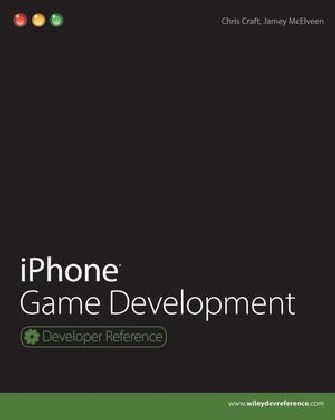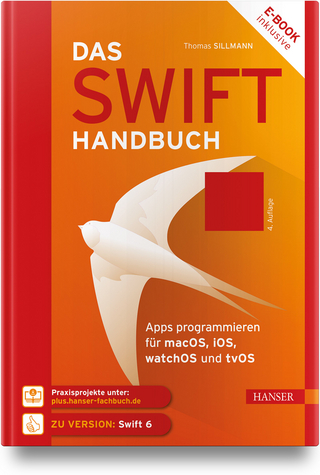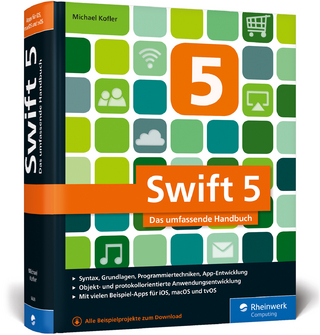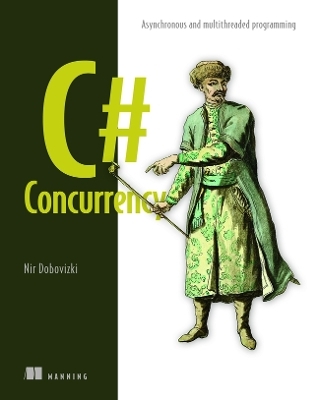
iPhone Game Development
John Wiley & Sons Ltd (Verlag)
978-0-470-49666-4 (ISBN)
- Titel ist leider vergriffen;
keine Neuauflage - Artikel merken
New Apple Developer Series! A technical and business guide to creating and selling iPhone games If you've always wanted to develop a cool iPhone game application and sell it for big bucks, this book is for you. iPhone Game Development covers all technical and commercial bases, from how to sign up for the Apple Development Program, master the development tools in the iPhone SDK, publish your game to the App Store, and convince people to buy it. You'll find full coverage of Cocoa Touch and other great features of the iPhone SDK, plus pages of real-world examples with step-by-step explanations. The book also includes loads of royalty-free code you can use for commercial development.
Apple's iPhone is not only a mobile phone, it's also a game platform rivaling big names like Nintendo and Sony; anyone can sign up for the Apple Developer Program and publish their works to the App Store This hip book written by two successful gamers with over a decade of game development experience will teach you both the technical and business aspects of developing and publishing a game to the App Store, plus how to convince end-users to buy it Includes examples with step-by-step explanations of actual games and apps currently on the App Store A Companion Web site provides royalty-free code from the samples in the book, which you can use to jumpstart your own game development Save weeks of development time with the expert guidance you'll find in iPhone Game Development ! Note: CD-ROM/DVD and other supplementary materials are not included as part of eBook file.
Chris Craft and Jamey McElveen are the founders of the popular iPhone development site, http://appsamuck.com. Chris Craft is a software architect with ten years of experience in developing mobile software solutions-including applications, games, and utilities-for Windows Mobile, Palm, and iPhone. Jamey McElveen is a lead software architect with twelve years of experience. He joined the iPhone Developer Program early and has also been developing applications since day one for the iTunes App Store.
Introduction. Part I: Beginning iPhone Programming. Chapter 1: Getting Started. Appreciating the History of Mobile Devices. Introducing the iPhone SDK. Introducing the iPhone Developer Program. The cost of getting started. Signing up to be an iPhone Developer. Un-Boxing Your iPhone Developer Tools. iPhone Dev Center. iPhone Developer Program Portal. iTunes Connect. iPhone Developer Support Center. Testing Applications on Your Device. Generate and install a Development Certificate. Register iPhone and iPod touch Device IDs. Create an App ID to identify your application. Generate and install a Development Provisioning Profile. Configure the Code Signing Identity of your application. Build and test your application on your development device. Summary. Chapter 2: Creating Your First App: Hello World. Setting Up Your Environment. Getting the iPhone SDK. Installing the iPhone SDK. Test-Driving the SDK. Getting a sample app to try out. Running the sample in the iPhone Simulator. Running the sample on your iPhone or iPod touch. Programming: Hello World. Defining your goals. Examining your options. Coding the application. Summary. Part II: Creating Simple iPhone Applications. Chapter 3: Constructing Puzzle Apps. Reviewing Famous Examples. Understanding Game Design: Presenting Challenges. Create time pressure. Limit number of turns. Limit space. Embracing Multi-Touch. Leveraging a new style of input. Learning the technology. Envisioning Animations. Programming: AmuckSlider. Defining your goals. Examining your options. Coding the application. Analyzing Business Aspects. Summary. Chapter 4: Building Novelty Apps. Programming: iFlame. Programming: iDrum. Programming: Bonfire. Analyzing Business Aspects. Summary. Part III: Shall We Play a Game? Chapter 5: Producing Action Games. Reviewing Famous Examples. Understanding Game Design: Excitement and Achievement. Enjoying the benefits of competition. Creating sprites. The online marketplace. Creating sounds. Programming: AmuckRacer. Defining your goals. Examining your options. Coding the application. The Road Ahead. Full-screen animation. Putting the player in charge. What's Next?. Analyzing Business Aspects. Summary. Chapter 6: Building Community with Facebook. Getting to Know Facebook. Connecting to Facebook Accounts. Download the Facebook Connect for iPhone SDK. The Facebook Connect sample project. Registering as a Facebook developer. Creating a Facebook application. Setting the Facebook API key and application secret. Creating a feed template. Creating a new Facebook Connect application. Working with sessions. Learning more about delegates and protocols. Creating alert views. Logging in. Getting extended permissions. Publishing feed stories. Using the Facebook Platform API. Analyzing Business Aspects. Summary. Chapter 7: Connecting Players in Real Time. Facing the Challenges of Real-Time Multiplayer Games. Network latency. Lost packets. Understanding Game Design: Competition. Practice makes perfect. Extending the learning curve. Choosing Your Connection Options. Hooking Up with Your Peers. Running and reviewing P2P Chat. Dissecting the code behind P2P Chat. Programming: AmuckPuck. Making a good first impression. Understanding the data. Focusing on the details. Connecting to players with peer-to-peer. Analyzing Business Aspects. Summary. Chapter 8: Taking Turns with Other Players. Examining Turn-Based Game Play. Reviewing the game flow. Understanding the stages. Understanding Game Design: Strategy. Choosing Your Connection Options. Head-to-head. Peer-to-peer. Web services. Push notification. Finding Friends to Compete Against. Connecting players with Web services. Adding push notification to the process. Programming: Amuck-Tac-Toe. Designing the application. Abstracting for separation and reuse. Examining the details. Analyzing Business Aspects. Summary. Part IV: Advanced Technical and Business Programming Concepts. Chapter 9: Grasping Advanced Programming Topics. Exploring the Camera. Getting Oriented with the Compass. Turning Up the Audio. Playing simple sounds with AudioToolkit. Making some "real: noise with OpenAL. Looking into Video. Discovering Geolocation. Stepping into the Third Dimension. Analyzing the OpenGL ES template. Drawing a cube with volume. Summary. Chapter 10: Understanding the Business of Software. Learning Marketing Strategies. App Store reports. App Store statistics. Application size. Application price. Refunds. Parental controls. Quality control. Making the Best Apps. Using sound. OpenGL ES. Transitions. Xcode tools. iPhone 3GS features. iPhone OS 3.0 features. iPhone SDK 3.0 features. Simulator vs. device. Worldwide Developers Conference. Apple Developer Connection (ADC) memberships. Apple Developer Forums. Apple Push Notification service. Product icons. Supporting different iPhone OS versions. Exploring App Store Concepts. Supply and demand. Promo codes. Contests. App Store rejections. App Store custom backgrounds. Top free and paid applications. iTunes Deep Links. Worldwide distribution. App Store Logo License Program. iTunes Affiliates Program. Customer Reviews. Feedback. Review sites and testimonials. Customer ratings. Using App Store Search Secrets. Keywords. App Store application description. On sale. Videos. Maximum number of applications. App Store application categories. App Store approval wait times. Marketing Yourself. Social networking. In-app marketing and advertising. Competition. Testing. In App Purchases. Blogs. Lite version. App updates. Ad Hoc beta testing. Application names. Application piracy. Screen shots. Summary. Epilogue: Looking Ahead. Refining your skills. Answering the question: Is there more? Where to learn more. Preparing for the future. Part V: Appendixes. Appendix A: Resources. Appendix B: 31 Days of iPhone Apps. Glossary. Index.
| Erscheint lt. Verlag | 6.11.2009 |
|---|---|
| Reihe/Serie | Developer Reference |
| Zusatzinfo | Illustrations |
| Verlagsort | Chichester |
| Sprache | englisch |
| Maße | 188 x 233 mm |
| Gewicht | 1021 g |
| Einbandart | Paperback |
| Themenwelt | Mathematik / Informatik ► Informatik ► Betriebssysteme / Server |
| Informatik ► Programmiersprachen / -werkzeuge ► Mac / Cocoa Programmierung | |
| Informatik ► Software Entwicklung ► Mobile- / App-Entwicklung | |
| Informatik ► Software Entwicklung ► Spieleprogrammierung | |
| Informatik ► Weitere Themen ► Smartphones / Tablets | |
| ISBN-10 | 0-470-49666-5 / 0470496665 |
| ISBN-13 | 978-0-470-49666-4 / 9780470496664 |
| Zustand | Neuware |
| Informationen gemäß Produktsicherheitsverordnung (GPSR) | |
| Haben Sie eine Frage zum Produkt? |
aus dem Bereich


